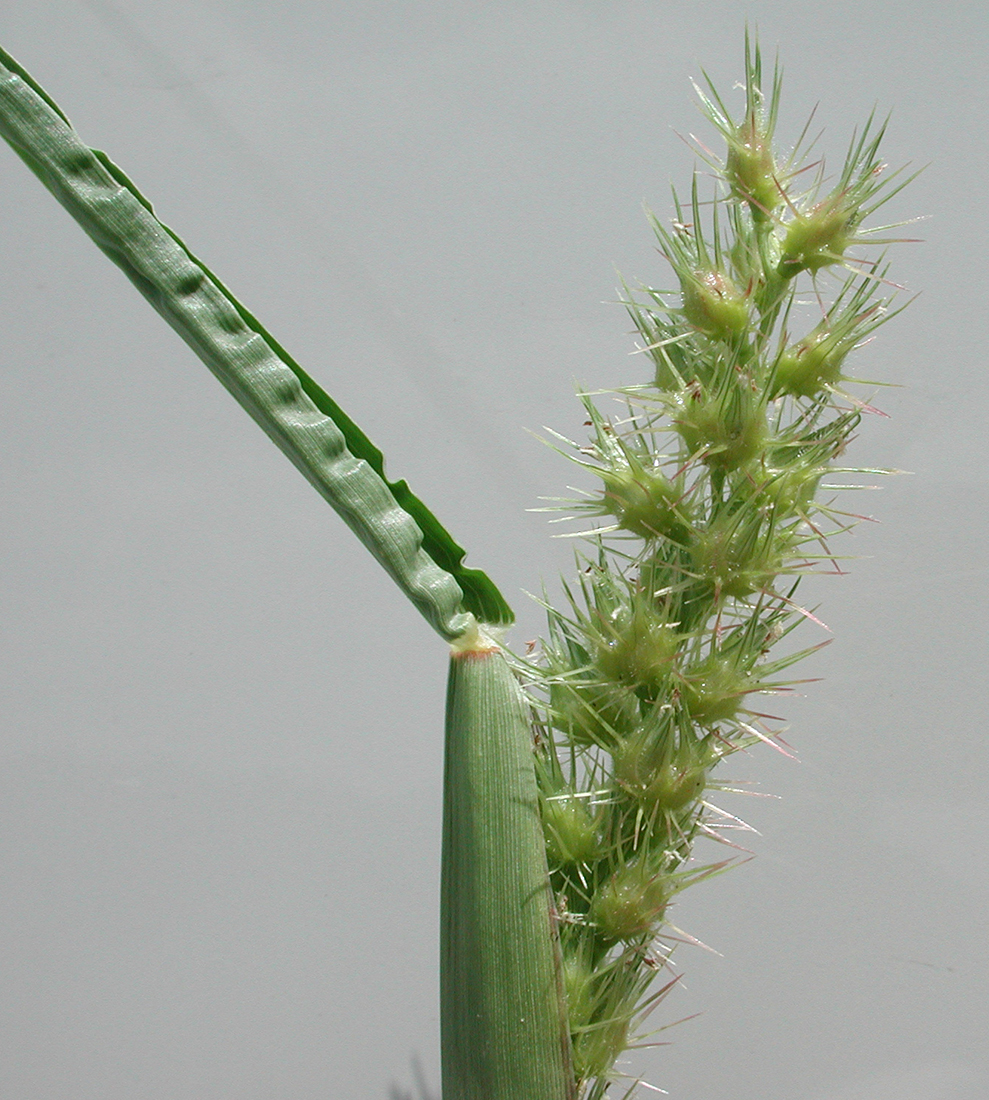Long-Spined Sandbur
- Grass (Poaceae family):
- Cenchrus longispinus (Hack.) Fernald
- EPPO code:
- CCHPA
- Other names:
- Bur grass
Species information
- Lifecycle:
- Annual.
- Propagation:
- Reproduces by seed.
- Emergence:
- Long-spined sandbur emerges in the spring with the majority of plants emerging in May. It sometimes can, however, germinate into the summer months.
- Habitat:
- Most commonly, long-spined sandbur is found in sandy soils throughout southern Ontario.
- Competitiveness:
- University of Guelph (Ridgetown campus) research has shown that where long-spined sandbur is left uncontrolled at typical field densities, it can inflict yield losses as high as 30% in soybeans and 40% in corn (Soltani et al., 2009, 2010).
Identification clues
- Auricles:
- None.
- Ligule:
- hairy, short (1 mm).
- Leaf blade:
- Long-spined sandbur leaf blades are mostly hairless, but will feel rough when the blade is run between the thumb and index finger in one direction.
- Leaf sheath:
- The leaf sheath is split with overlapping margins that are membranous. Although they are hairless when young, they may be sparsely haired when older. There is a tuft of hairs at the collar (junction between leaf sheath and blade).
- Stem:
- Long-spined sandbur stems are flat and are covered with many plants. Near the base of the plant, stems exhibit a reddish tinge.
- Seed heads:
- Seed heads grow in rows with spiny burs that appear in a spike-like formation. The spiny burs have extremely sharp spines that will anchor to clothing and/or skin when walking through the field.
- Roots:
- Roots are fibrous with a distinct bur that is easily found close to the surface of the soil.
Often mistaken for
I know it's not Yellow foxtail because long-spined sandbur lacks the short, wiry hairs at the bottom of the leaf blade base.
I know it's not Barnyardgrass because long-spined sandbur has a hairy ligule, while barnyardgrass has no ligule at all.




Updated: January 13, 2023
Published: January 13, 2023